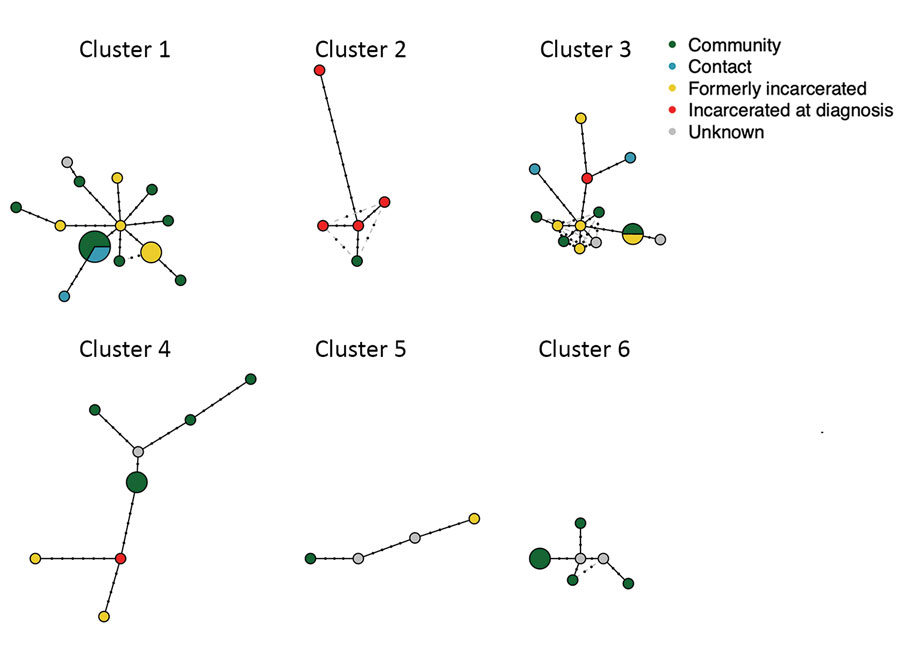Volume 27, Number 3—March 2021
Research
Local and Travel-Associated Transmission of Tuberculosis at Central Western Border of Brazil, 2014–2017
Figure 3

Figure 3. Haplotype networks of the 6 predicted tuberculosis transmission clusters with >4 members from Central West Brazil, 2014–2017. Nodes represent unique haplotypes and are scaled to size. Points along branches indicate single-nucleotide polymorphism distances between isolates. Node color indicates incarceration status at the time of diagnosis. Light gray lines indicate possible alternative links between haplotypes.
1These authors contributed equally to this article.
2These authors contributed equally to this article.
Page created: January 20, 2021
Page updated: February 21, 2021
Page reviewed: February 21, 2021
The conclusions, findings, and opinions expressed by authors contributing to this journal do not necessarily reflect the official position of the U.S. Department of Health and Human Services, the Public Health Service, the Centers for Disease Control and Prevention, or the authors' affiliated institutions. Use of trade names is for identification only and does not imply endorsement by any of the groups named above.